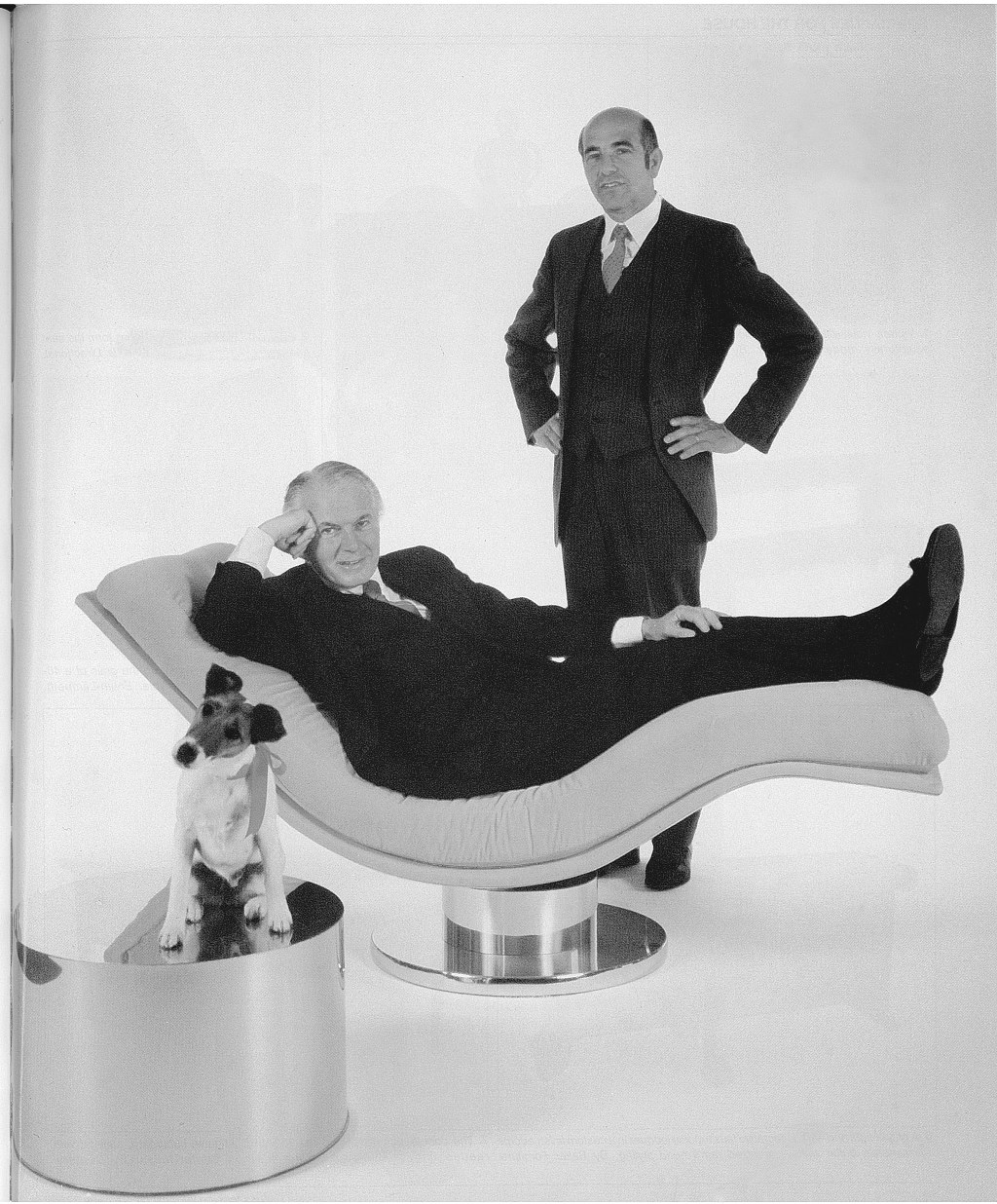HIGH POINT, N.C. — It gets loud inside Thayer Coggin’s headquarters here. Beyond the offices and past the showroom filled with midcentury modern designs, the factory floor buzzes with the shrill screech of saws slicing wood, the tap-tap of hammer to nail, the whir of sewing machines stitching upholstery.
“We literally are still building this furniture the same way we did 70 years ago,” said Phil Miller, vice president of Thayer Coggin. “A lot of companies have changed their methods of manufacturing or the raw materials that they used, but Thayer Coggin was adamant about saying, ‘We’re going to maintain the way I was taught to build furniture, which is the right way.’”
In 1953, Coggin founded his furniture company after serving as an Army medic in World War II. Post-war America was a time of creativity and consumerism, with returning G.I.s and their families settling into suburban enclaves popping up across the nation. With all those new homes, the demand for furnishings to fill them accelerated.
Coggin saw that need and launched his company in a small facility in High Point with just over a dozen employees. That same year, he began working with Milo Baughman, who became one of the famous names of midcentury modern furniture design. Coggin and Baughman struck a professional and creative partnership that would endure until their deaths in 2003.
Hailing from the West Coast, Baughman favored the California modernist approach to design, with clean, sleek lines and materials and motifs that reflect a connection between interiors and the outdoor world. In Coggin, Baughman found a kindred spirit who not only understood modern design but shared his values of furniture construction.
“The way you build a piece of furniture is a meeting of design, engineering and raw materials,” Miller said. “And those components, along with the manufacturing techniques used, are the difference between building a piece of furniture that will last a lifetime or producing a product with built-in obsolescence.”
Thayer Coggin still carries on the same bench-made craftsmanship production model today, a rarity in the furniture industry, where the commoditization of home goods has diminished overall quality and left landfills brimming with “fast furniture” castoffs.
“For instance, all our lumber is maple because it’s the best, most-dense wood for a chair,” Miller said. “We use wooden dowels for the joinery, and each structural corner is reinforced with a wood corner block cut at a 45-degree angle. That’s a method historically associated with fine furniture and only a handful of companies still do that today.”
Thayer Coggin custom-makes each piece of its furniture, from the frame to the finish to the upholstery. Quality certainly factors into that process, as does the nature of the lines and silhouettes of midcentury design.
“It’s more difficult to manufacture modern-design furniture than traditional designs,” Miller said. “The frame creates the shape, and the upholstery has to be cut and sewn precisely and fitted to the piece.”

The Ripple chair from Thayer Coggin.
A cursory glance at furniture resale sites such as Chairish illustrate how Thayer Coggin’s midcentury modern designs have endured. Vintage pieces designed by Baughman can fetch as much as $16,500 for a pair of tilt-and-swivel lounge chairs.
“If you would’ve bought the Roxy-O chair in 1965, it would have cost $250, which was certainly a lot in relative dollars, but they start at $10,000 on the vintage market now,” Miller said.
The vintage market isn’t the only place to find Baughman designs for Thayer Coggin. The company still produces the Roxy-O chair along with an array of Baughman’s signature pieces, such as the Good Egg swivel chair, the Ripple armless chaise and the circular Bond acrylic lounge chair.

Thayer Coggin’s Roxy-O swivel chair.
Those pieces are available in an array of finishes and materials from wood to metal, nearly 400 fabrics and around 120 leather options. Miller estimates the company also uses around 25 percent customer’s own material (COM) fabrics, usually working with interior designers, which make up a large portion of Thayer Coggin’s clientele.
But Thayer Coggin doesn’t simply rely on vintage Baughman designs to fuel its business. Today the company employs four designers — Ransom Culler, Stanley Jay Friedman, Rick Lee and Alexander Guy Hill — who each bring their own take on modern design to the pieces they create for the brand. Hill serves as the brand’s director of design, an apt role considering he studied under Baughman at Brigham Young University and worked on his staff as an associate product designer.
“My designs reflect where I feel modern furniture is today in relation to style, proportion and comfort,” Hill said.
At last October’s High Point Market, Thayer Coggin launched an array of pieces in celebration of its 70th anniversary, including the sculptural stainless steel Nest chair designed by Lee; Culler’s Take 2 lounger, which offers a new spin on the Womb chair, and Friedman’s tiered, circular Palooka tables.
The company also reissued Baughman’s elegantly undulating Ripple chaise, which was originally released in 1966. Sitting in Thayer Coggin’s showroom, upholstered in a buttery yellow nubby fabric, the piece feels as fresh today as it must have nearly 60 years ago.
That sense of timelessness — both in design and construction — continues to serve Thayer Coggin under the watchful eye of Coggin’s daughter, Royale Wiggin, who runs the company. And the dedication to making furniture “the right way” continues to make Thayer Coggin stand out in a sea of midcentury modern copycats.
“As people have gotten into that segment of furniture, they’re trying to hit certain price points, which is understandable,” Miller said. “But that means you have to start dumbing down the design, and you have to use lower density cushions. We know who we are, and we appreciate the fact that Thayer Coggin is an investment, not just a purchase.”



